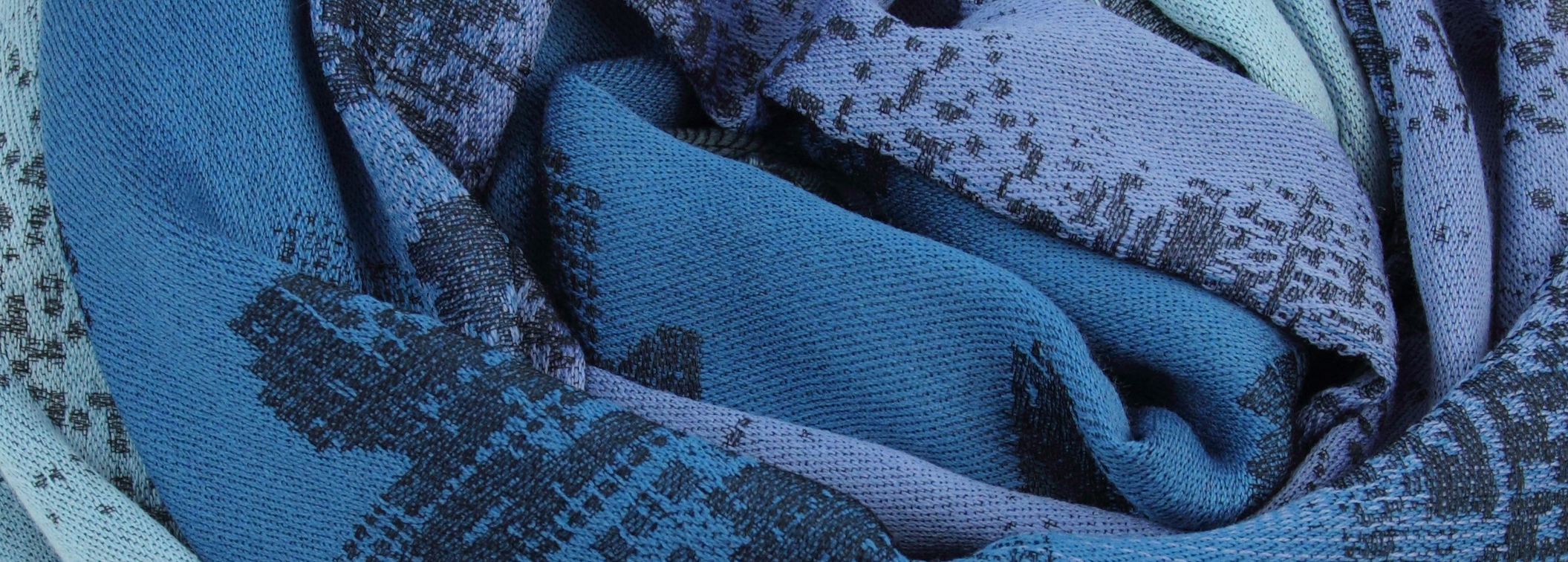How to choose the right scarf fabric for you
Each season has its own material: wool, silk, cotton, cashmere, rayon, and more. Here, we are going to help you choose the scarf that best suits your needs.
There are several different issues you need to keep in mind when choosing the right material or fabric for your scarf. There are several types of fabric used to make scarves, as well as different fabrics and various combinations to make a blended fabric (wool, silk, cotton, cashmere, rayon) different textures, and varying degrees of heaviness and thickness.
Most consumers don’t know a lot about the different properties of textile fibers and fabrics, but being aware of all this can help you choose the right scarf for you. We’re here to help!
It’s all about composition
The composition of a scarf is important because it shows us all the different threads involved in making the scarf. The materials making up the composition are shown as a percentage and is required by law to be shown on the scarf’s label. So, the scarf’s tag should tell you if the scarf is made with natural fibers like 100% wool, 100% cotton, or if several materials are used, for example 70% cotton with 30% silk, or if there are synthetic fibers and at what percentage. The scarf’s composition has a large effect on the price. For example, a 70% silk and 30% cotton blend scarf will naturally be more expensive than a 70% cotton and 30% silk blend scarf. The composition itself is an easy way to determine the scarf’s quality.
But the weave is important too…
The fabric’s weight and the thickness of its threads is also a big factor in determining the scarf’s quality. A scarf woven with large wool threads will be very warm, while a scarf woven with fine wool threads will be light and breathable even if the two scarves are made of the same material. Fabrique d’écharpe weaves fabrics in many different weights, with a wide range of natural yarns to offer you a multitude of scarf choices.
Cotton
Cotton is a classic natural material, being easy to wear and inexpensive, (between €15 and €25 per kilogram of dyed yarn, or about $7.50–$13 per pound). It is perfect for summer scarves because one of cotton’s primary properties is that it’s very absorbent. Cotton plant fibers can indeed absorb up to 8.5% of its weight in water. Cotton is also a very good insulator, and can insulate from both heat and cold. Cotton is a plant fiber that is easily dyed, and we have a multitude of colors from the most pastels to the most vivid hues. Fabrique d’écharpe buys Giza cotton from Egypt, because it is the best long-thread cotton in the world, and is a very high quality cotton used by luxury brands. For summer, you will want a scarf with over 50% cotton composition, such as our Cherie model. However, we also have great winter scarves that use cotton in their composition, for example mixed with wool or silk, like our Mumbai model.
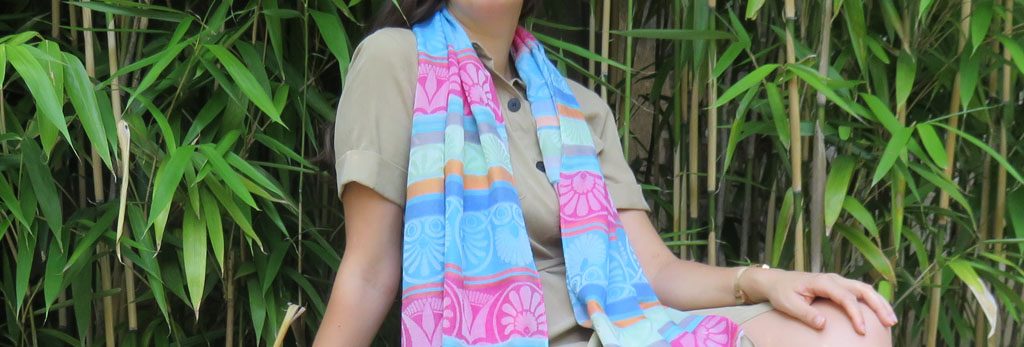
Silk
Silk is a natural fiber of animal origin, being made from the cocoon produced by the Bombyx caterpillar. For centuries, silk has been considered a luxury material. The price of yarn-dyed silk varies between €70 and €100 per kilogram, or about $38 to $55 per pound. Silk possesses almost innumerable qualities: it is very light-weight and is remarkably soft to the touch, it keeps you warm in winter and cool in summer, has a lustrous and luminous appearance, has a fluid form, absorbs moisture well, and is very durable. These are all great qualities which make it a choice material for scarves, whether pure or blended! Fabrique d’écharpe has created a multitude of silk-based scarves, we have a loom just for silk that operates throughout the year in our workshop. We have the Romantic and Rosae models which are an original blend of silk and wool for winter, while the Emotion and Chicago scarves are silk and cotton blends to wear in summer. Silk is for all seasons, all activities, all occasions, all outfits, don’t hold back!
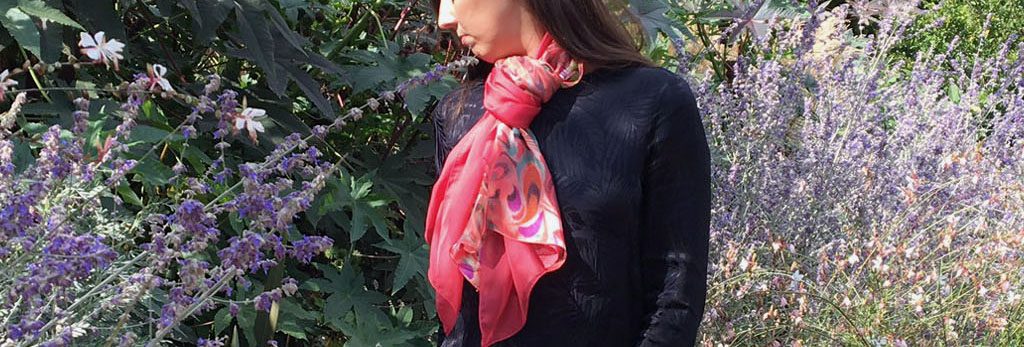
Wool
Wool is a natural animal fiber, with the wool we use in our scarves coming exclusively from Merino breed sheep, most of which today are raised in Australia. Our wool is certified mulesing free, meaning that the sheep are treated ethically and is certified cruelty free. Merino wool is very soft and supple, and keeps you warm without making you sweat. Moreover, it is prized for not retaining odors, is antibacterial, quick drying, its elasticity and durability, and is much finer than average sheep’s wool and won’t scratch or itch your skin. All these properties make Merino wool-based scarves warm and comfortable, perfect for winter. However, Merino wool remains an expensive material, especially dyed yarn (about €50-€60 per kilogram, or $27-$35 per pound) For fall scarves, a scarf made of 20 to 30% Merino wool is perfect, it will be cozy but not too hot, while anything over 50% Merino wool is great for winter. Fabrique d’écharpe offers the Philadelphia model in mostly wool and the not-too-hot Passementerie model with only 40% Merino wool.
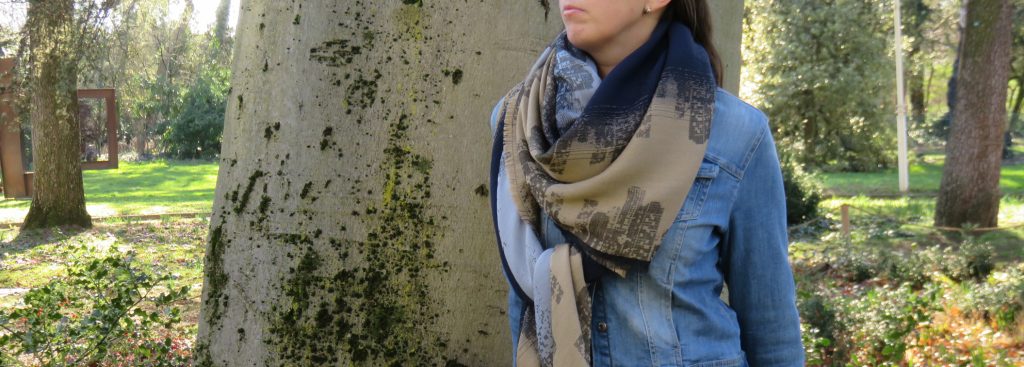
Cashmere
Cashmere is the luxury material par excellence, a regal material that comes from the Kashmir breed of goats of the Himalayan highlands of Kashmir, a region straddling Pakistan, India, and China. A goat can produce about 150 grams (about 5.30 ounces) of cashmere per year, while it takes about 200 grams (about 7 ounces) to make a scarf. These goats produce fur that is three times more insulating than regular sheep’s wool, and the fibers are much softer, finer, and lighter. However, these goats are relatively rare, with production being much lower than demand. This is why cashmere is much more expensive than normal wool, costing about 3 to 4 times more, at around €150 to €200 per kilogram, or about $80-$110 per pound. This delicate fiber is quite difficult to dye, with many precautions being necessary so that the fabric retains all its special, soft qualities while also still being durable enough for weaving. Because of this, few companies dye cashmere yarn, and Fabrique d’écharpe has an exceptional partner in this field. Fabrique d’écharpe has many clever silk, cashmere and cotton blends to create an ultra-soft, ultra-fine, ultra-warm fabric! Our Thalès and Ronsard models are good examples.
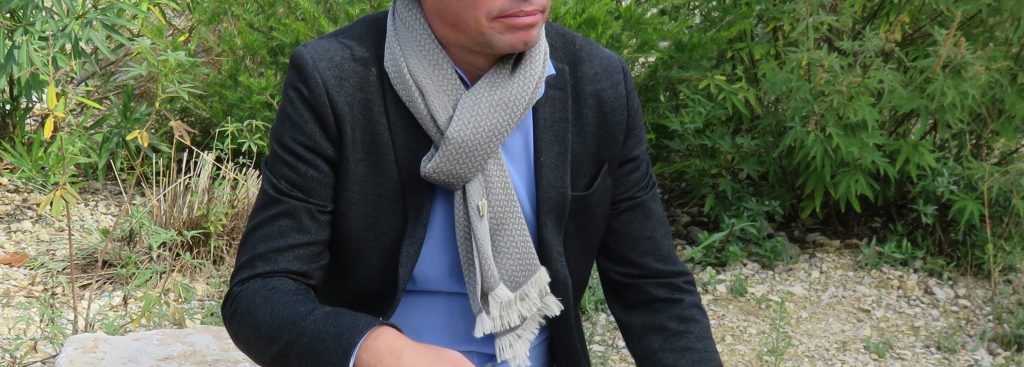
Rayon
Rayon is a fiber of natural origin obtained by spinning cellulose fibers from wood, often beech. Rayon can be used by itself, or blended with other fibers like cotton. Rayon is a new material developed in the 1960s that has several important qualities. Rayon is very elastic and resistant, does not shrink when washed, is soft and comfortable to wear, absorbs moisture very well while also wicking it away quickly, requires little maintenance and does not crease, and is fully biodegradable. Rayon fabrics can be composted once their life cycle is over. Thus, it is a very ecologically-friendly fiber. Moreover, rayon is inexpensive, you can find dyed rayon yarns at around €15-€20 per kilogram, or $7.75-$11 per pound. Fabrique d’écharpe makes its rayon scarves blended with other materials. Examples would the Imaginaire scarf, made of 75% Merino wool and 25% rayon, which is a good for winter, or our Cybele scarf, made of 75% cotton and 25% rayon, which is ideal for summer scarves. Rayon is used for both summer and winter, and is also perfect for mid-season. Rayon-based compositions are recommended for more casual styles and everyday wear because they are easy to maintain and very resistant, especially when mixed with cotton.
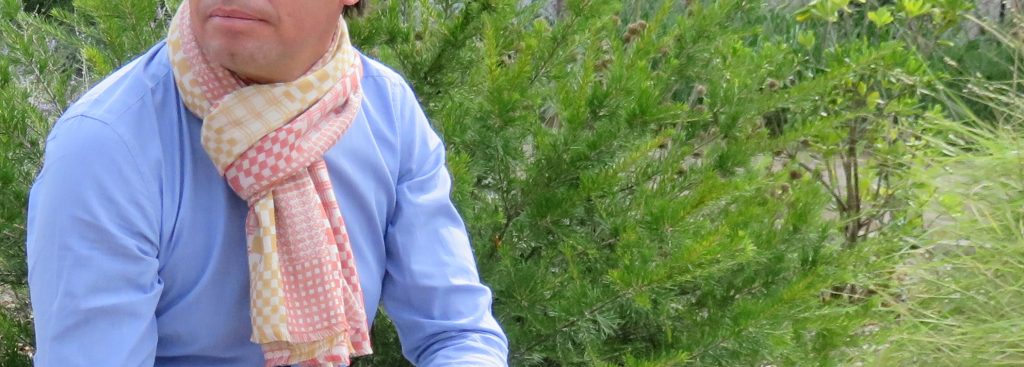
How we choose our materials
Fabrique d’écharpe places a great importance on choosing materials for our scarves, selecting only natural materials made in expert spinning mills. We have formed partnerships over several generations with specific spinning mills and dye works. We are very demanding as to the quality of the yarns we use, because this is an important determiner as to how well the yarn will work on new machines and the quality of the finished fabric produced. We spend a lot of time researching new materials, visiting international fairs, talking to fashion influencers, and sampling and testing new items that have been listed for several decades.
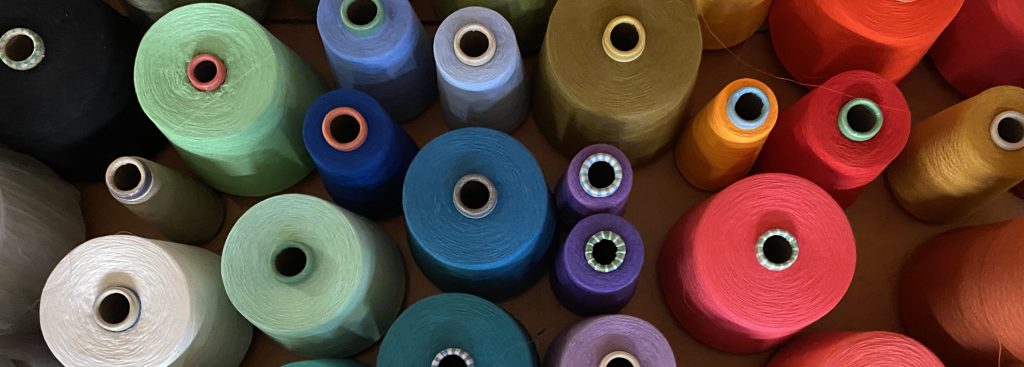
Fabric texture
At this point in our discussion, it would be helpful to point out a few technical aspects of fabric.
First we need to define “thread count,” which refers to the number of threads in the warp and weft weaves in a square centimeter of a given fabric. The warp thread is placed lengthwise and the weft thread widthwise. The title of the thread determines its size, and more precisely its weight in relation to its length.
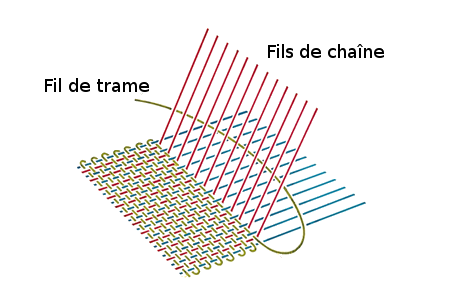
Therefore, the number and size of the threads in a piece of fabric has a great effect on its quality. Striking the right balance is one of Fabrique d’écharpes great skills, since we we specialize in Jacquard weaving. Each new design, each new piece requires us to come up with a new balance of weight and materials in a given piece’s fabric. It is with our many years of experience that we have mastered this skill to create high-quality, durable, comfortable fabrics.
But what should you choose?
IIt depends on what you are looking for. You will want a fabric with a strong texture to protect you from cold, while you will want a lighter texture for airy and voluminous scarves. We use a system of pictograms which accompany each scarf to tell you whether the scarf is warm, very warm, or, fairly light-weight, or very light.

This is an example of a fabric for winter:
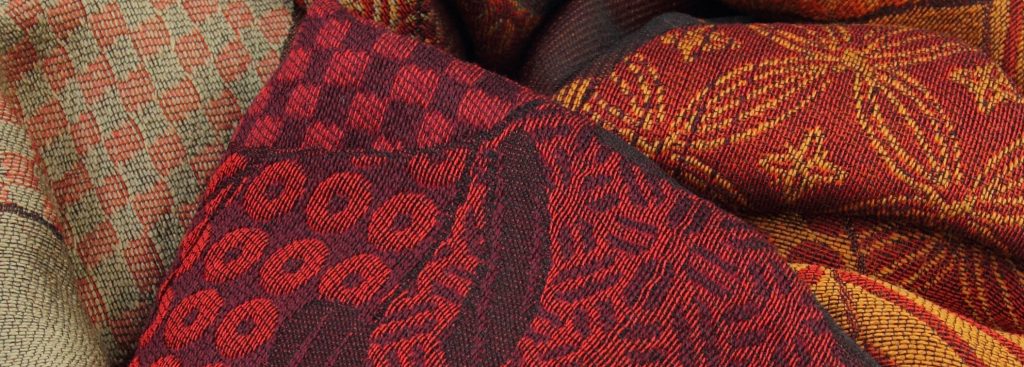
And an example of a light-weight fabric for summer:
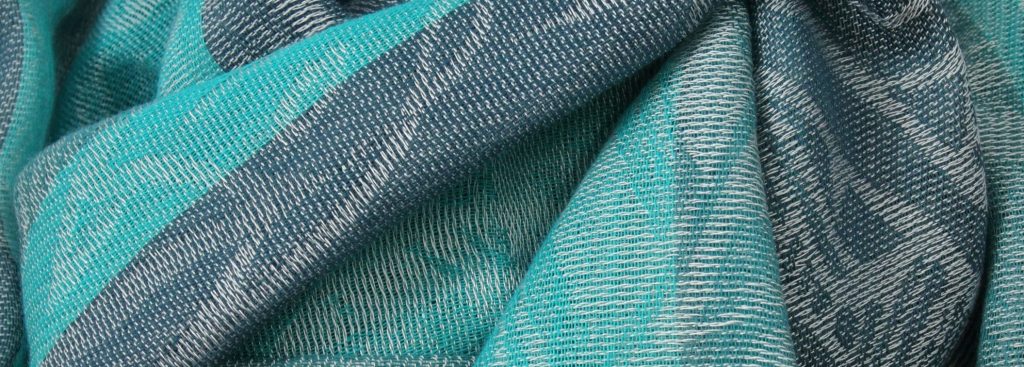
Conclusion
French scarf’s expertise lies in our knowledge in weaving which we have thanks to our many years of experience, which guarantees perfect quality on all our scarves, foulards, shawls, and stoles. We also place a great importance on choosing the raw materials and good suppliers, to offer you the best quality fabric, as well as creating the best textures, designs, and dyes to bring you originality and modernity.

Write to us





